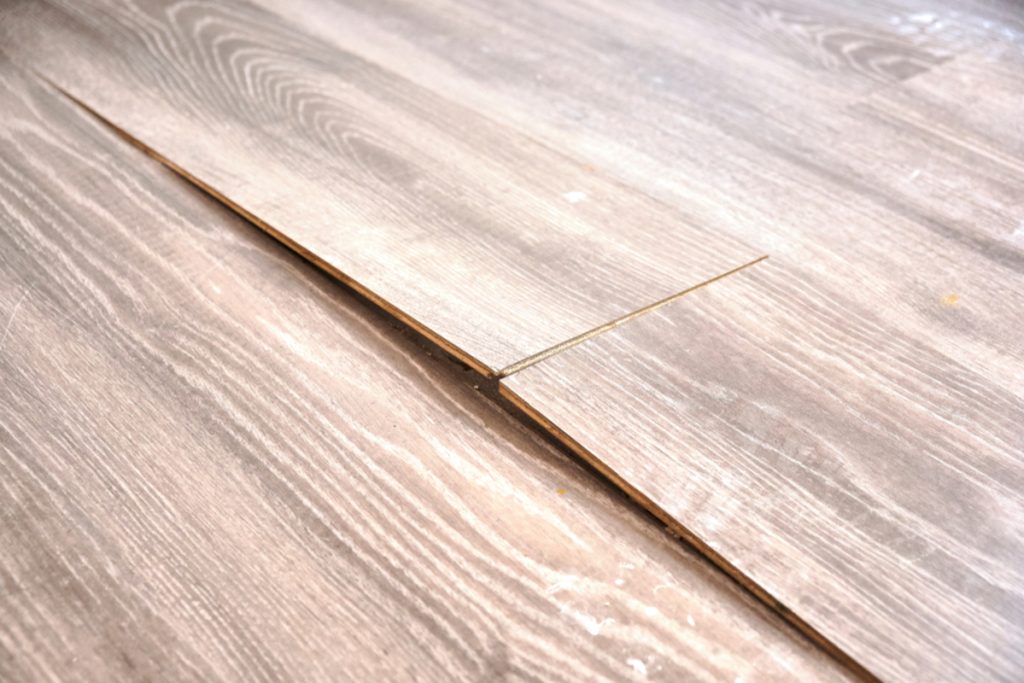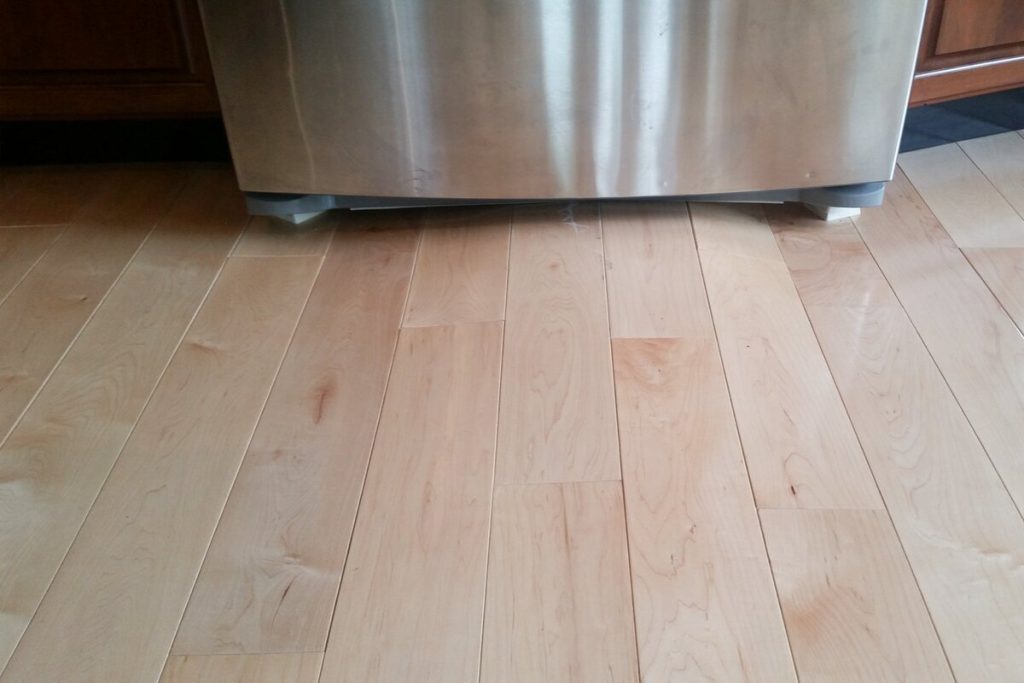Laminate flooring has become an increasingly popular choice for homeowners seeking an attractive, durable, and cost-effective flooring solution. However, like any flooring material, laminate is not without its challenges. One of the most significant issues faced by laminate floor owners is buckling. This comprehensive guide aims to explore the causes, prevention strategies, and solutions for laminate floor buckling, providing homeowners with valuable insights to maintain their flooring investment and understand how to prevent laminate floors from buckling.
The Nature of Laminate Floor Buckling
Laminate floor buckling manifests as an uneven appearance caused by planks lifting and separating from the subfloor. This phenomenon results in raised ridges on affected areas, compromising both the aesthetic appeal and functionality of the flooring. Several factors can contribute to buckling, including moisture exposure, temperature fluctuations, and improper installation techniques.
The primary culprit behind laminate floor buckling is often moisture damage. When exposed to water or excessive humidity, laminate planks may absorb moisture, leading to swelling and subsequent lifting from the subfloor. Temperature variations also play a crucial role, as the natural expansion and contraction of laminate planks can result in buckling over time. Furthermore, installation errors, such as inadequate acclimation or failure to provide proper expansion gaps, can exacerbate the problem.
Common Causes of Laminate Floor Buckling
— Moisture and Temperature Fluctuations
The impact of moisture and temperature changes on laminate flooring cannot be overstated. Increased moisture levels can cause laminate floorboards to expand, separate, warp, buckle, or lift. This is particularly problematic in cases of flooding or water leaks within the home. Even routine cleaning practices, such as wet mopping or steam cleaning, can inadvertently force water into the core of laminate flooring, resulting in significant damage.
Humidity variations due to seasonal changes or inadequate climate control can also lead to swelling and other issues with laminate flooring. To safeguard your investment, it is crucial to address potential water sources promptly and employ appropriate cleaning techniques. Homeowners may wish to consider investing in a dehumidifier to regulate indoor humidity levels, particularly in areas prone to moisture.
— Improper Installation Techniques
Faulty installation is a leading cause of laminate flooring problems, including buckling, lifting, and warping. This often occurs when installers fail to account for the natural expansion and contraction of laminate boards due to humidity changes. Consequently, the boards may press against each other and the walls, causing bubbling or swelling. Understanding how to prevent laminate floors from buckling involves ensuring proper installation from the start.
To ensure proper installation, it is advisable to:
- Adhere meticulously to manufacturer instructions
- Utilize appropriate tools and materials
- Double-check measurements before cutting boards
- Provide adequate expansion gaps around the room’s perimeter
- Select the appropriate type of laminate flooring for moisture-prone areas
- Ensure there are no gaps between laminate boards where water could penetrate
— Subfloor Imperfections and Related Issues
The condition of the subfloor plays a crucial role in the longevity and appearance of laminate flooring. An uneven subfloor can cause laminate planks to lift, while inadequate moisture barriers or improper underlayment can lead to moisture accumulation and subsequent buckling.
Regular inspections of both the subfloor and laminate flooring are essential to identify potential issues before they escalate. If moisture damage is detected, it is imperative to address it promptly to prevent further deterioration and costly repairs.
Financial Considerations for Laminate Flooring in Canada
When contemplating laminate flooring for your home, it is important to consider various costs associated with purchase, installation, and potential repairs. The following table provides an overview of typical costs in Canadian dollars (CAD) for laminate flooring-related expenses:
| Item | Cost Range (CAD) | Average Cost (CAD) |
| Laminate Flooring Materials (per sq. ft.) | $1.00 – $5.00 | $3.00 |
| Professional Installation (per sq. ft.) | $2.00 – $4.00 | $3.00 |
| Underlayment (per sq. ft.) | $0.30 – $1.00 | $0.65 |
| Moisture Barrier (per sq. ft.) | $0.15 – $0.50 | $0.30 |
| Removal of Existing Flooring (per sq. ft.) | $1.00 – $3.00 | $2.00 |
| Subfloor Repair (per sq. ft.) | $2.00 – $5.00 | $3.50 |
| Baseboards and Trim (per linear ft.) | $1.50 – $4.00 | $2.75 |
Please note that these costs are estimates and may vary based on location, quality of materials, and specific project requirements.
Repairing Buckled Laminate Flooring
Addressing buckled laminate flooring requires a systematic approach to both identify and resolve the underlying issues. Homeowners may consider the following steps to repair buckled laminate flooring:
- Identify the root cause of the buckling, which may involve inspecting for water damage, checking humidity levels, or examining the quality of installation.
- Address the underlying issue by repairing any subfloor damage, resolving moisture problems, or correcting installation errors before proceeding with floor repairs.
- Carefully remove the buckled or damaged laminate planks, beginning from the wall and working inward.
- Ensure the subfloor is clean, dry, and level before installing new planks.
- Replace the damaged planks with new ones, ensuring they are properly locked into place.
- Utilize a floor roller after installation to ensure the entire floor is even and secure.
For more extensive damage, it may be necessary to replace larger sections of laminate flooring. In such cases, it is advisable to consult with a professional flooring specialist to ensure proper techniques are employed and to prevent future damage.
Preventive Measures for Laminate Floor Buckling
Prevention is key when it comes to maintaining the integrity and appearance of laminate flooring. Homeowners may wish to consider the following strategies to prevent buckling:
- Implement effective moisture control measures, such as using dehumidifiers in areas prone to humidity and promptly cleaning up spills to prevent water damage.
- Employ proper cleaning techniques, avoiding wet mopping or steam cleaning. Instead, use a slightly damp mop or cleaning products specifically approved for laminate flooring.
- Maintain a consistent indoor climate by keeping temperature and humidity levels steady throughout the year to minimize expansion and contraction.
- Utilize entrance mats at all exterior doors to trap dirt and debris before they can be tracked onto the laminate flooring.
- Protect the flooring from furniture damage by using felt pads under the legs of heavy pieces to prevent scratching and indentation.
- Conduct regular inspections of the flooring to identify and address minor issues before they develop into more serious problems.
Professional Assistance vs. DIY Approaches
When faced with buckled laminate flooring, homeowners often find themselves weighing the merits of a do-it-yourself repair against professional intervention. While DIY methods can address many laminate flooring issues, certain situations may require the expertise of a professional. It is advisable to consider seeking professional assistance if:
- The buckling affects a large area of the flooring
- There is significant water damage or mold growth present
- The subfloor is damaged or uneven
- The cause of the buckling is unclear
- Previous DIY attempts have been unsuccessful
- The flooring is still under warranty
While professional help may seem more costly initially, it regularly proves to be more cost-effective in the long term by properly addressing issues and preventing future issues.
Final Thoughts
Laminate floor buckling is a common issue that can significantly impact the appearance and functionality of a home. By understanding the causes, implementing preventive measures, and knowing how to address problems when they arise, homeowners can maintain beautiful and durable laminate flooring for years to come. Proper installation, effective moisture control, and regular maintenance are key factors in how to prevent laminate floors from buckling. When issues do occur, it is important to assess the situation carefully to determine whether a DIY approach is feasible or if professional help is needed.


